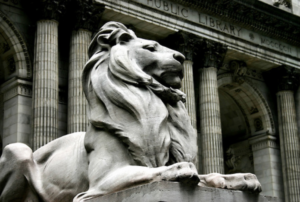Is your Club or Group looking for an inspiring guest speaker or do you want to host a book signing? . . . Contact Woody today!
* * *
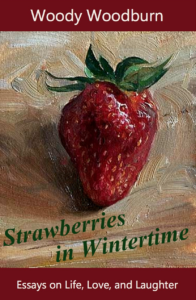
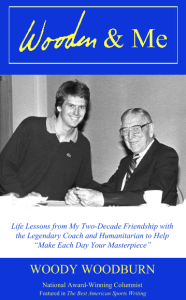 For a Personalized Autographed copy of “STRAWBERRIES IN WINTERTIME” or “WOODEN & ME” mail a check for $25 to:
For a Personalized Autographed copy of “STRAWBERRIES IN WINTERTIME” or “WOODEN & ME” mail a check for $25 to:
Woody Woodburn
400 Roosevelt Court
Ventura, CA 93003
* * *
Road trip reaches a “Joyous” dead end
Fourth in a series of columns chronicling my recent father-son travels from Paul Revere’s gravesite in Boston to John Steinbeck’s writing cabin in Long Island, and more.
* * *
The lane was narrow and in need of attention, a blend of gravel and dirt and potholes, leading to a dead end.
In my mind’s eye, nevertheless, Bluff Point Lane came into focus like The Yellow Brick Road of Oz. Indeed, at its terminus and on the left, awaited a castle.
A red brick walkway leads from the driveway to the front door of John Steinbeck’s summer home in Sag Harbor, Long Island. My son and I had driven a few odometer clicks shy of 100 miles from his apartment in Manhattan, by way of Theodore Roosevelt’s Sagamore Hill “Summer White House” estate, to reach here.
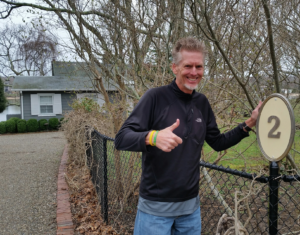
Reaching my destination at 2 Bluff Point Lane.
More accurately, my journey covered more than 3,000 miles. Having previously visited Steinbeck’s boyhood home in Salinas, California, where his writing career began, I wanted to see its East Coast bookend where the aging author wrote the final manuscripts of his life.
Those closing works include “The Winter of Our Discontent,” which was fittingly set in a fictionalized Sag Harbor named New Baytown, and “Travels with Charley” about a road trip around America that began right here at 2 Bluff Point Lane on Sept. 23, 1960.
Steinbeck and his black poodle Charley’s departure on their 11,000-mile odyssey in a customized green Ford camper pickup had been delayed by a hurricane. Nearly six decades later, my son and I arrived in an orange rental car after driving through a rainstorm.
Auspiciously, the clouds parted just as we parked. Unfortunately, the front door did not open when I knocked; there would be no serendipitous tour inside the private residence. Through the windowed door, however, a prominently displayed framed poster-size black-and-white photo of Steinbeck in his mustachioed youth greeted us.
In town, in a charming bookstore, in a similar oversized frame we had earlier seen a photograph of Steinbeck in his older age. Not surprisingly, an entire shelf was dedicated to books written by this quiet hamlet’s most famous resident.
The most famous resident’s summer residence proved remarkably modest. Forest green when Steinbeck owned it from 1955 until his death in 1968, it is now painted slate grey. Three windows in front are adorned with white shutters while tall timbers adorn the expansive grounds.
One tree is especially noteworthy. Planted by Steinbeck himself directly before the front door as a sentinel for privacy, it has grown so thick of trunk a “Welcome” mat now barely squeezes in between the threshold and tree base.
Steinbeck fittingly named this house on the east end of Long Island “Eden,” yet it was not the castle I sought to sightsee.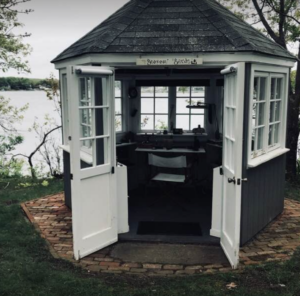
The rightful castle is around back, a stone’s throw away by a strong arm. Specifically, it is a hexagonal outbuilding that Steinbeck called his “writing cabin.” Smaller by half than Henry David Thoreau’s famous 10-by-15-foot cabin at Walden Pond, it is nonetheless a citadel for the imagination with a breathtaking panoramic view of picturesque Bluff Point Cove below.
Skirted by a brick border, the grey wooden cabin’s matching shingle roof rises to a point. Paned white double doors on one side are joined on the other five by white-framed windows to provide 360-degree natural light and inspiration.
Outside, hanging from two hooks above the entrance, a white wooden sign with hand-painted black medieval lettering reads “Joyous Garde,” in honor of Sir Lancelot’s castle.
Within, on a simple built-in plank desktop, is where the Knight of the Keyboard’s magic happened.
* * *
Woody Woodburn writes a weekly column for The Ventura County Star and can be contacted at WoodyWriter@gmail.com.
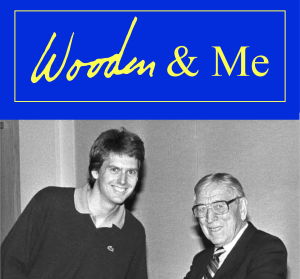 Check out my memoir WOODEN & ME: Life Lessons from My Two-Decade Friendship with the Legendary Coach and Humanitarian to Help “Make Each Day Your Masterpiece” and my essay collection “Strawberries in Wintertime: Essays on Life, Love, and Laughter” …
Check out my memoir WOODEN & ME: Life Lessons from My Two-Decade Friendship with the Legendary Coach and Humanitarian to Help “Make Each Day Your Masterpiece” and my essay collection “Strawberries in Wintertime: Essays on Life, Love, and Laughter” …
- Personalized signed copies are available at WoodyWoodburn.com
- Unsigned paperbacks or Kindle ebook can be purchased here at Amazon

